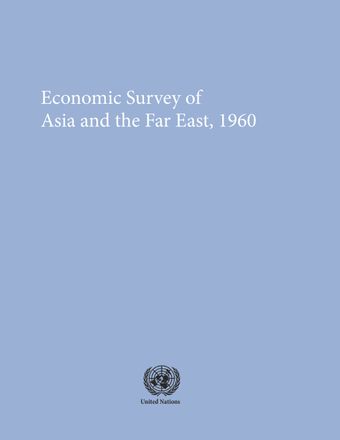Aggregate demand and allocation of resources

- Author: United Nations Economic and Social Commission for Asia and the Pacific
- Main Title: Economic and Social Survey of Asia and the Far East 1960 , pp 40-52
- Publication Date: December 1960
- DOI: https://doi.org/10.18356/0394f156-en
- Language: English
Aggregate monetary demand in the ECAFE region appears to have been higher in 1960 than in 1959. To a large extent, it was stimulated by two good harvests in succession, a further increase in industrial production, a rise in exports and the continuation of the pressures of demand created by the excess of non-consumption outlays (on government current and capital expenditure and on private investment) over the financial resources released from consumption (through government revenue and private saving). This excess of non-consumption outlays over financial resources was manifested in budget deficits and expansion of bank credits. Except in a few countries, the increase in monetary demand was only partly offset by the rise in domestic output and imports. The latter were not increased as much as they could have been, as several countries took the opportunity of a favourable export situation and larger foreign aid to build up their external assets. Prices, on the whole, tended to rise, although, in some countries, the rise was hindered by controls and concealed by the unrealistic character of cost-of-living indices.
-
From This Site
/content/books/9789210599313s002-c003dcterms_title,dcterms_subject,pub_keyword-contentType:Journal -contentType:Contributor -contentType:Concept -contentType:Institution105


